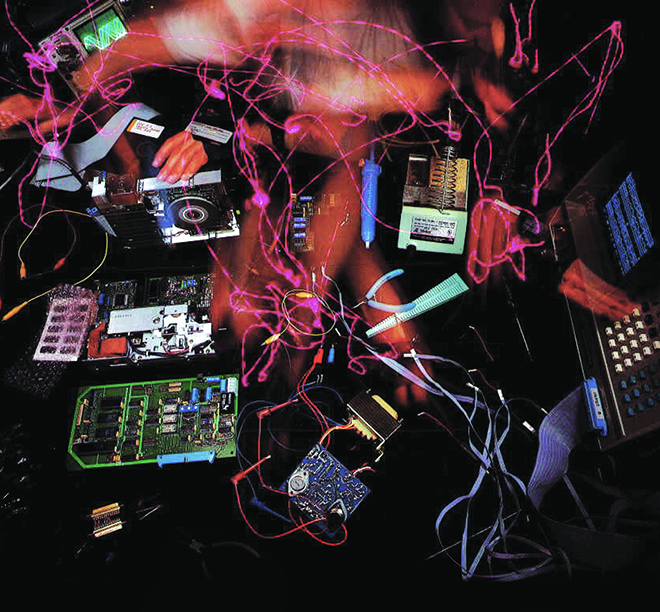Semester 1 2017 Studio 28
Post-Human Gestures
Loren Adams and David Fedyk
Studio Outline:
“Bodies are absent in architecture, but they remain architecture’s unspoken condition.”
(Grosz, Elizabeth. 2001. “Embodying space: An interview.” In Architecture from the outside: Essays on virtual and real space, 3-29. Cambridge, Massachusetts: The MIT Press.)
To suggest that architecture has a vested interest in the body is neither new nor ground-breaking; but for what bodies does our architecture truly cater? Despite an increasing shift away from the universal metanarratives of modernism and towards an architecture of heterogeneity, our representation of the body in architecture remains conspicuously homogenous. The dominant architectural body – the favoured body – is a healthy body; a productive body; an obedient body; a tranquil(ised) body.
But, are there not other bodies; other valid bodies?
Are there not violent bodies; lustful bodies; exhausted bodies?
Where are these bodies in our architecture?
Our agenda calls for a momentary lapse in our collective allegiance to this singular, modernist body. It is an experiment; a hopeful speculation about the possibility of an architecture that resists the dominant paradigm of corporeality and strives to make space for other bodies. It is a factory for the post-industrial nomad; an inquiry into the nature of desire and productivity; a critique of ergonomics. It is an architectural interrogation of our endless pursuit of an ideal (and therefore invisible) body.
Methodology:
This studio aims to introduce students to advanced design and fabrication methodologies using multiaxis programmable robots, through the lens of industrial ergonomics. The emphasis will be on developing a library of machine-gestures to interrogate the notion of “architecture as prosthesis”. Through emulation, exaggeration, and interpretation of anthropomorphic gestures using robotic technology, students will be prompted to unpack the relationship between the human body and its mechanical counterpart – the 6-axis industrial robot arm.
Throughout the semester, students will be presented with a collection of readings, audiovisual material, artworks, and architectural precedents (built and unbuilt) to prompt discussion, critique, and production of spatial outcomes. Hands-on engagement with multi-axis industrial robots and other machinery within the MSD Fabrication Workshop will form a key component of the assessment criteria, and students will be expected to produce a vast array of physical models. Using the robots as a pseudo-anthropomorphic technological prosthesis, students will be invited to examine the way in which architecture is complicit in the commodification of the human body – and, subsequently, explore alternative modes of formal production.
Studio Leaders:
LOREN ADAMS is the Coordinator of the new MSD Robotics Lab. She has a background in architecture, with an undergraduate degree from Curtin University and a Masters degree from RMIT. Loren recently relocated to Melbourne after 3 years living and working in Los Angeles, during which time she assisted in the design development, documentation, and fabrication of numerous complex, high-spec public and fine art projects. She specialises in digital fabrication, with particular emphasis on rationalising early schematic designs into geometry suitable for fabrication, shipping, and installation.
http://lorenadams.squarespace.com
DAVID FEDYK leads the Machine Workshop at the MSD Fabrication Workshop. With an architecture foundation and a life-long curiosity of making, he has over 10 years of professional architectural fabrication experience. He enjoys combining digital fabrication methods with traditional woodworking techniques, across different disciplines, to realize his projects.
www.davidfedyk.com
Recommended Background Knowledge:
Students are required to have a working knowledge of Rhino 5.0 and Grasshopper. A prior understanding of programming languages is helpful but not required. Students must also have access to a laptop with Windows 7 OS or higher.
Reading and Reference:
Gilbreth Motion Studies, Étienne-Jules Marey, Mike Mandel, Stelarc, Arakawa & Gins, Loie Fuller, Inspector Gadget, Donna Haraway, Elizabeth Grosz, Cameron Robbins
*IMAGE: Mandel, Mike. 1985. “Disk Drive Assembly.” In Making good time: Scientific management, the Gilbreths photography and motion futurism, 67. Riverside, California: The California Museum of Photography.
ST1/28 Monday 9am - 12pm, MSD Room 139
ST2/28 thursday 9am - 12pm, MSD Robotics Lab